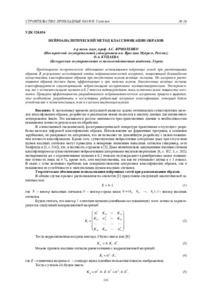Пожалуйста, используйте этот идентификатор, чтобы цитировать или ссылаться на этот ресурс:
https://elib.psu.by/handle/123456789/158Полная запись метаданных
| Поле DC | Значение | Язык |
|---|---|---|
| dc.contributor.author | Ярмоленко, А. С. | - |
| dc.date.accessioned | 2013-10-04T11:40:56Z | - |
| dc.date.available | 2013-10-04T11:40:56Z | - |
| dc.date.issued | 2012 | - |
| dc.identifier.citation | Вестник Полоцкого государственного университета. Серия F, Строительство. Прикладные науки.- Новополоцк: ПГУ, 2012.- № 16. - С. 141-147. | ru |
| dc.identifier.uri | https://elib.psu.by/handle/123456789/158 | - |
| dc.description | Stylistic Features of the Church of the Exaltation of the Holy Cross of the Basilian Monastery in String at the Beginning of the 19th Century I. Ozheshkovskaya in the Article a Volume-Plan Decision of the Church of the Exaltation of the Holy Cross of the Basilian Monastery in String After Its Reconstruction in «Russian» Style. the Comprehensive Analysis of the Archival Mate-Rials of 1900, First Exposed By the Author, Served as a Basis of Research. the Change of Architectural Look of Uniat Churches, Related Both to the World Tendencies of Style and to the Ideological Programme of Visible Uniat Figures, is Also Considered. the Conducted Analysis of the Saved Drafts and Photos of the Architectural Decision of the Church of the Beginning of the 20th Century Allowed the Author to Make a Graphic Reconstruction Which Renders the Probable Classic Look of the Church of the Exaltation of the Holy Cross of 1808. the Author’s Statement is Proved Concerning the Peculiarities of the Architecture of Uniat Churches of Polotsk Region, Having Classicism Tendencies, on the One Hand, and Desire to Turn Back to the Original Sources of the Early Christianity, on the Other Hand, Which Led to the Appearance of the Uniat Church of a New Type at the Beginning of the 19th Century – a Domical Installation With the Layout in Form of a Greek Cross. | en_US |
| dc.description.abstract | Представлено теоретическое обоснование использования нейронных сетей при распознавании образов. В результате исследований создан нейроаналитический алгоритм, позволяющий безошибочно осуществлять классификацию образов при отсутствии шумов входных сигналов. Но алгоритм распознавания образов должен быть эффективным и при наличии шумов. Зашумленные входные сигналы классифицируются существующими нейросетевыми алгоритмами неудовлетворительно. Эксперименты же с незначительными шумами в 0,2 пиксела подтверждают лишь незначительное повышение точности. Проверка эффективности разработанного нейроаналитического алгоритма привела к выводам, что необходимо разработать и исследовать робастный алгоритм классификации, который будет устойчив как к незначительным, так и к весьма ощутимым шумам. | ru |
| dc.language.iso | ru | ru_RU |
| dc.publisher | Полоцкий государственный университет | ru_RU |
| dc.relation.ispartof | Веснік Полацкага дзяржаўнага ўніверсітэта. Серыя F, Будаўніцтва. Прыкладныя навукі | be_BE |
| dc.relation.ispartof | Herald of Polotsk State University. Series F, Civil engineering. Applied sciences | en_EN |
| dc.relation.ispartof | Вестник Полоцкого государственного университета. Серия F. Строительство. Прикладные науки | ru_RU |
| dc.relation.ispartofseries | Серия F, Строительство. Прикладные науки;2012. - № 16 | - |
| dc.rights | open access | ru_RU |
| dc.subject | Геодезия | ru |
| dc.subject | классификация образов | ru |
| dc.subject | нейронные сети | ru |
| dc.subject | нейроаналитические алгоритмы | ru |
| dc.title | Нейроаналитический метод классификации образов | ru |
| dc.type | Article | ru_RU |
| Располагается в коллекциях: | 2012, № 16 | |
Файлы этого ресурса:
| Файл | Описание | Размер | Формат | |
|---|---|---|---|---|
| 141-147.pdf | 405.58 kB | Adobe PDF |  Просмотреть/Открыть |
Все ресурсы в архиве электронных ресурсов защищены авторским правом, все права сохранены.